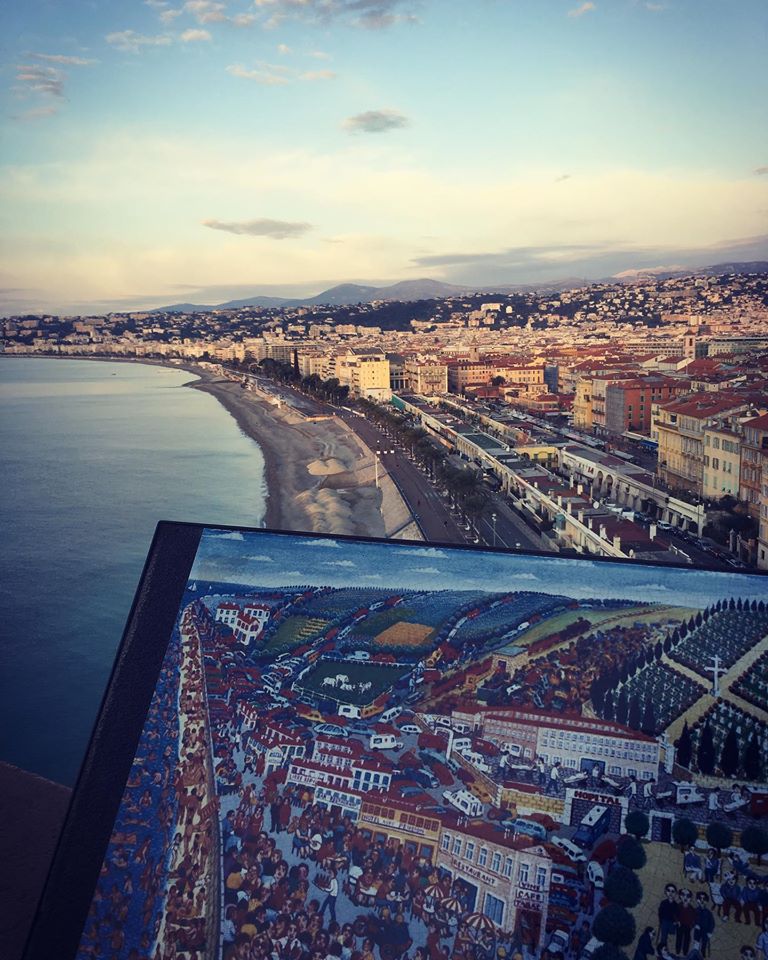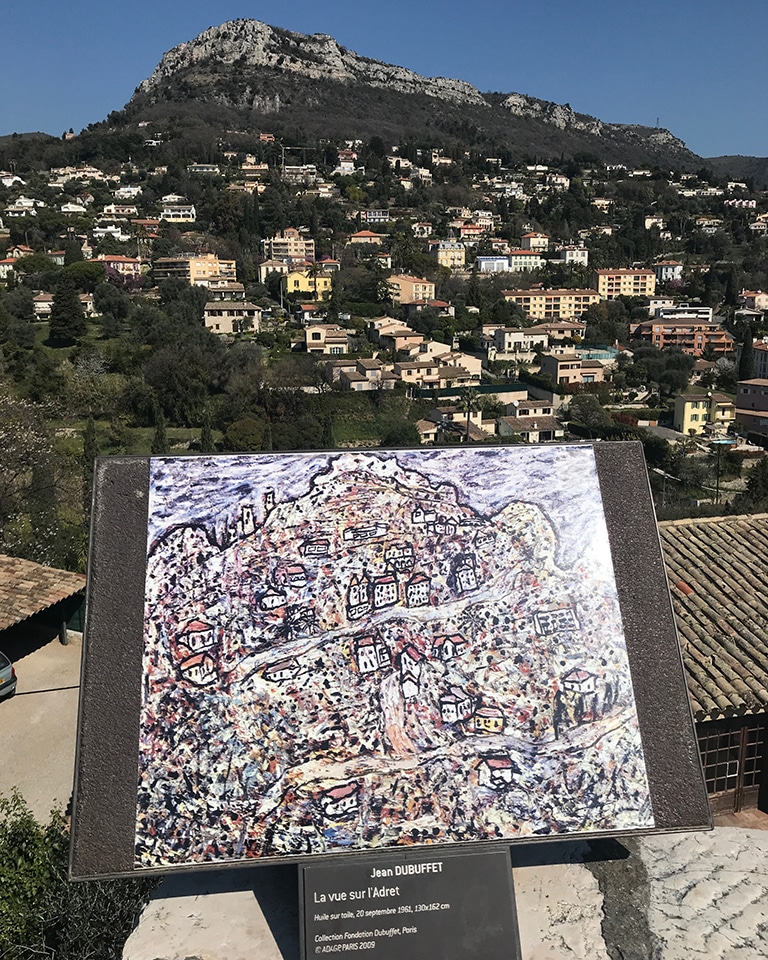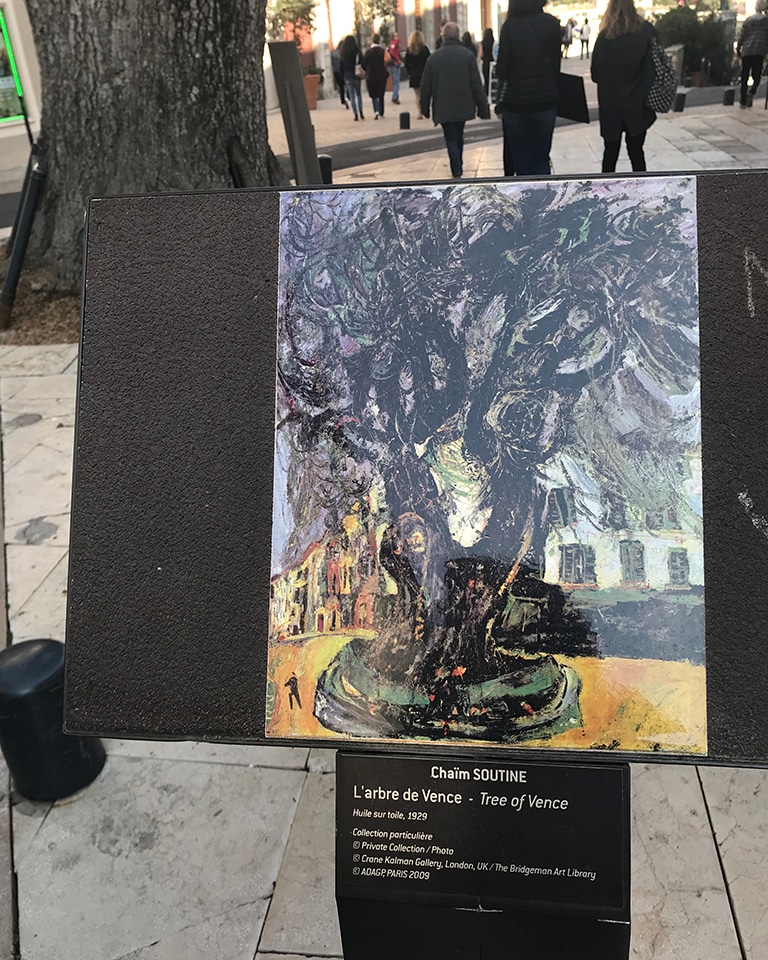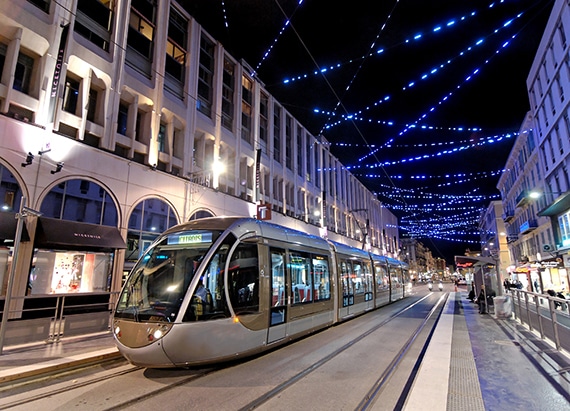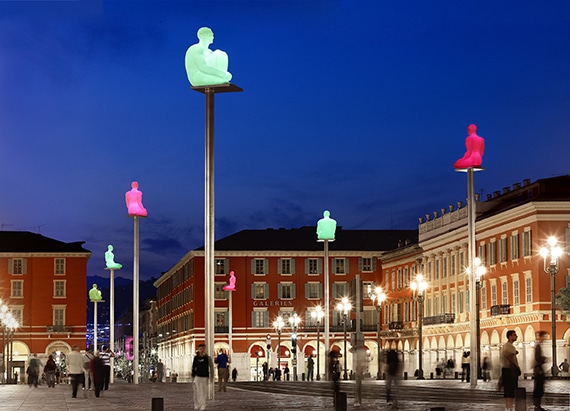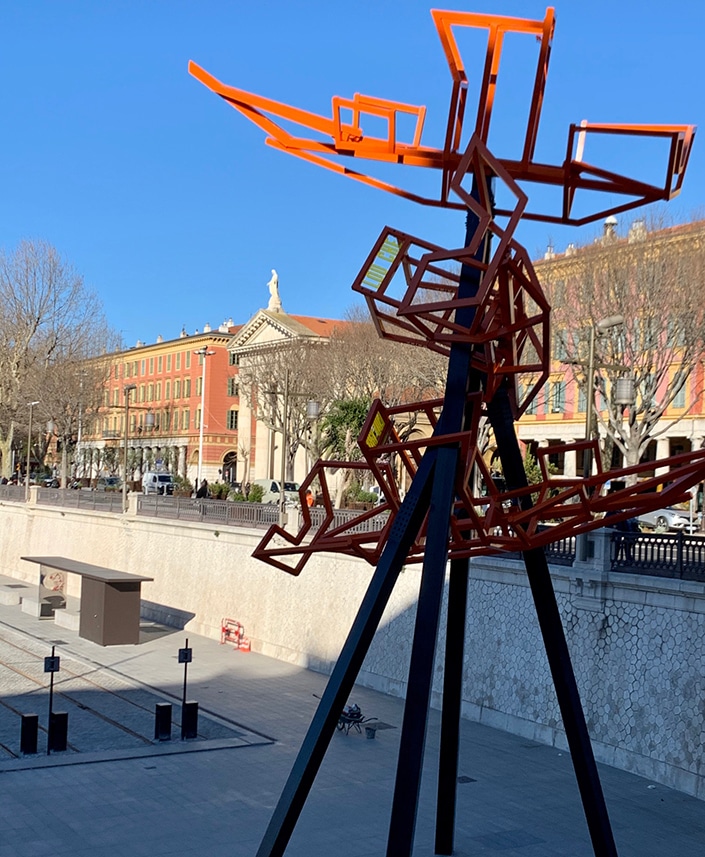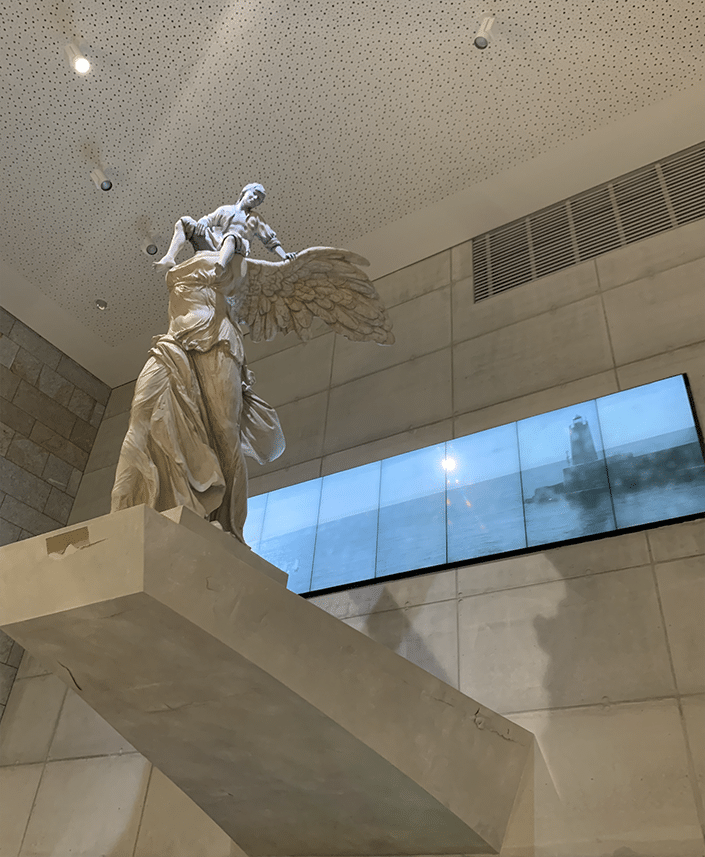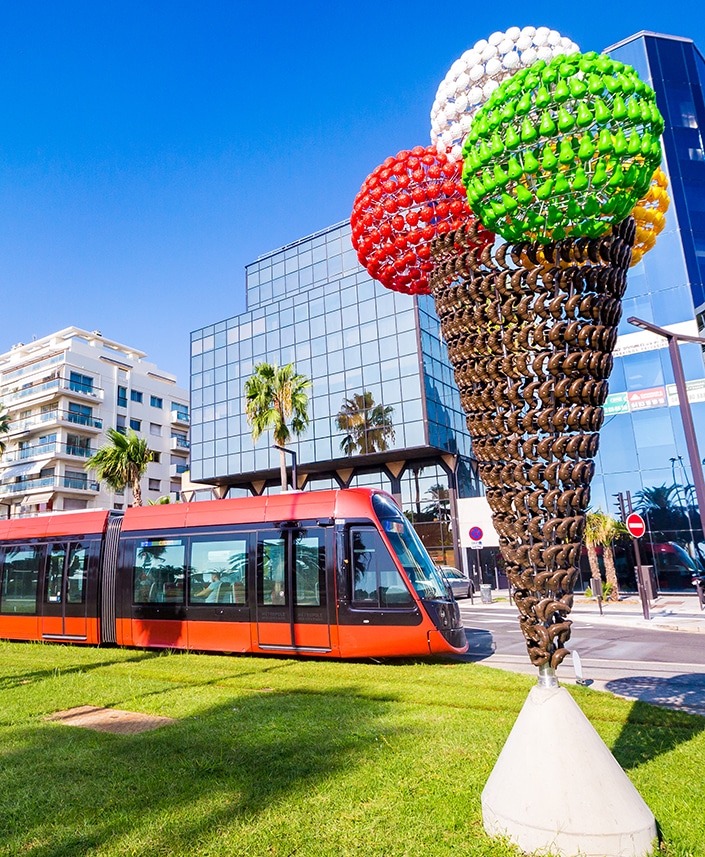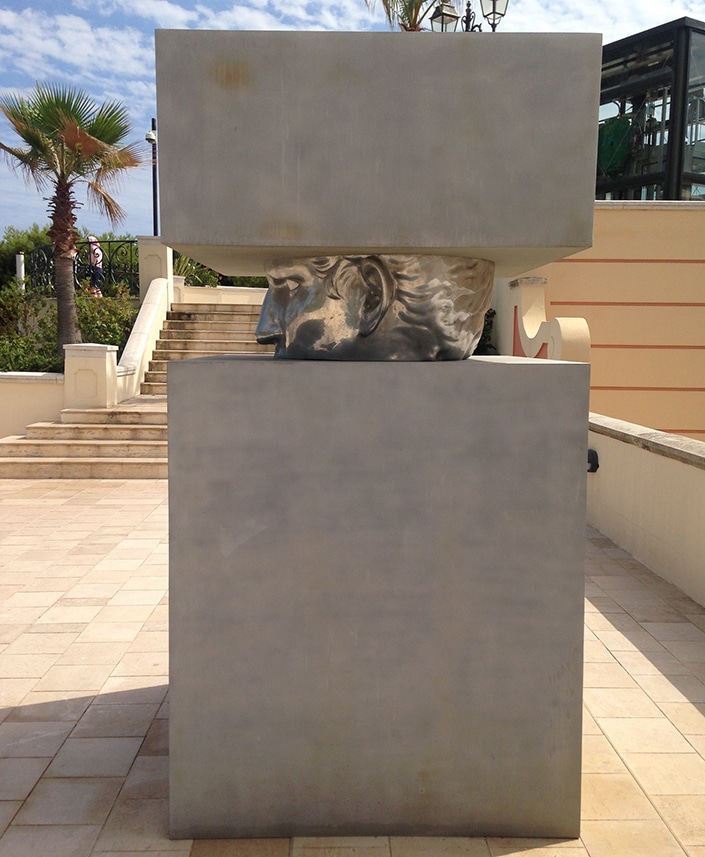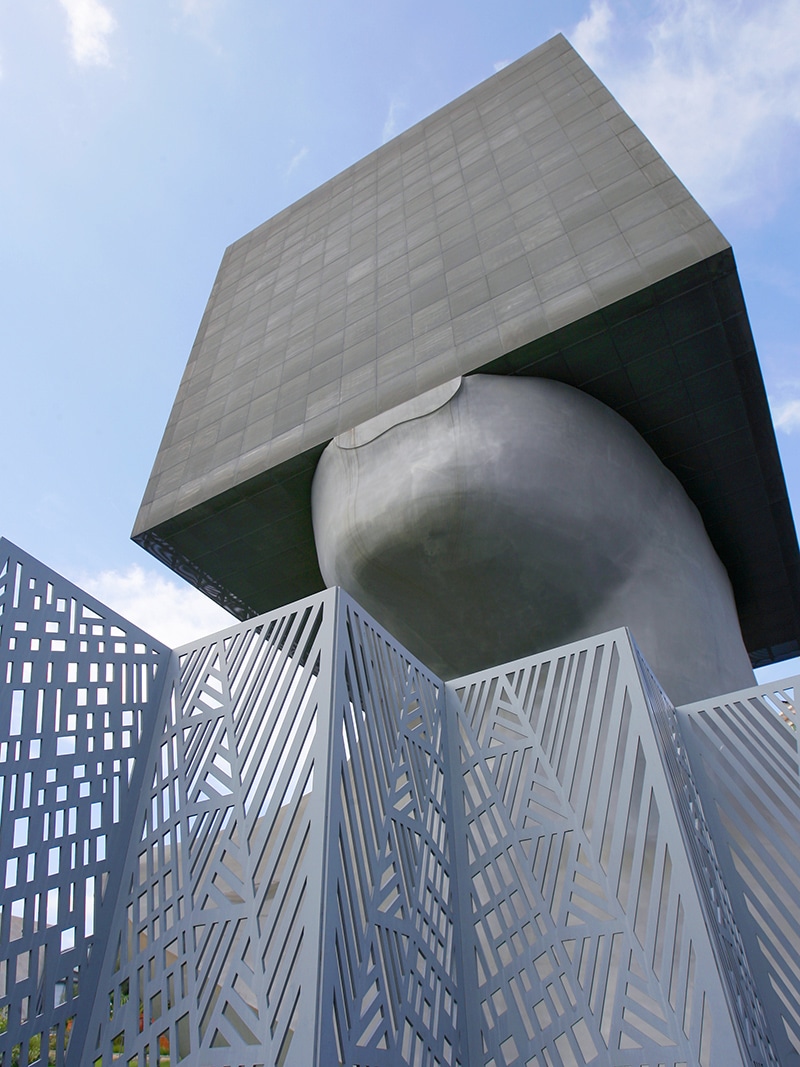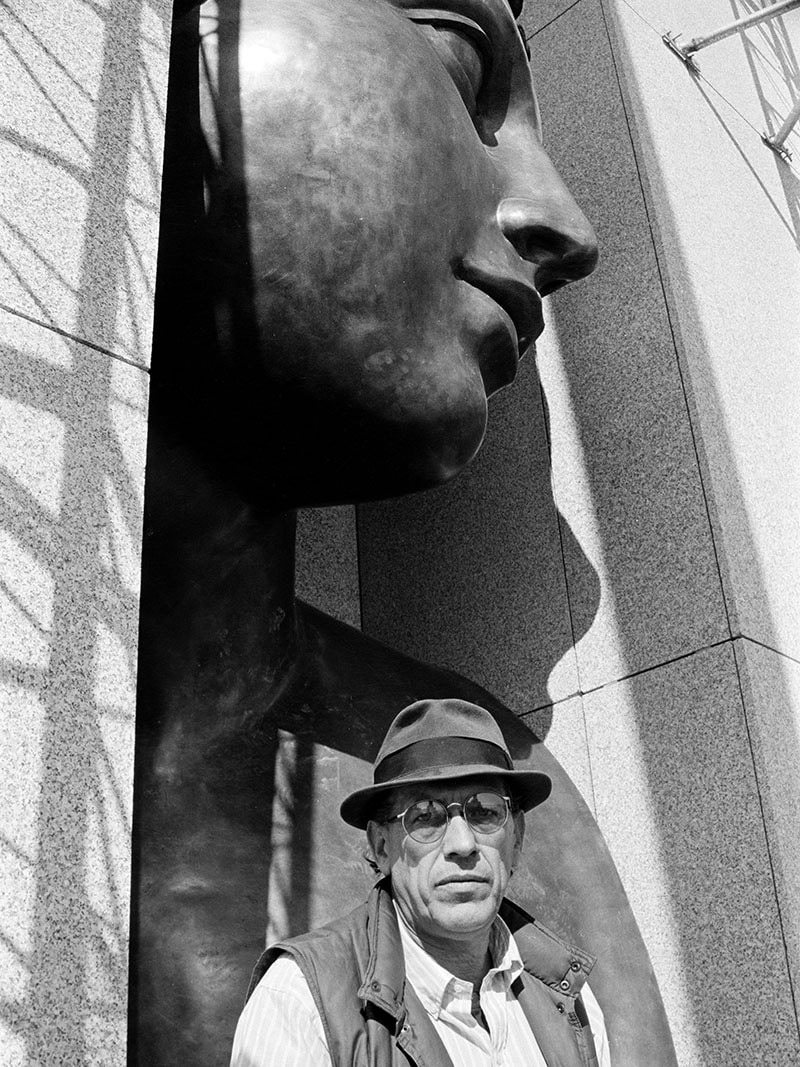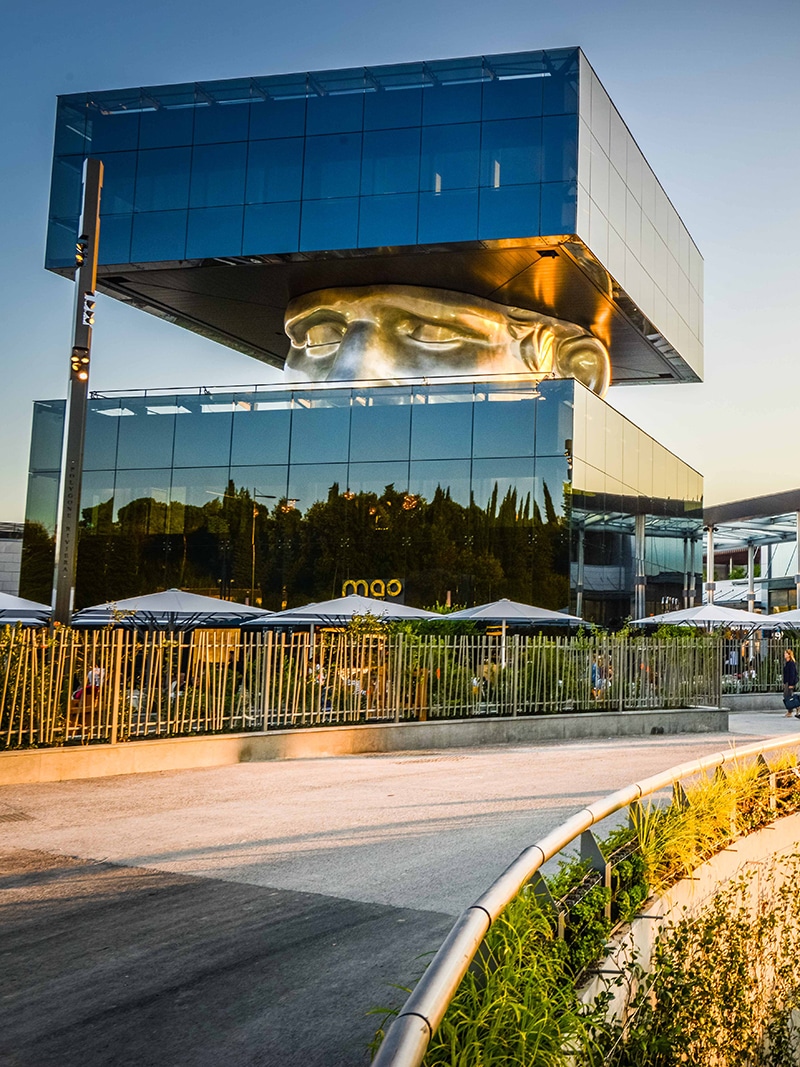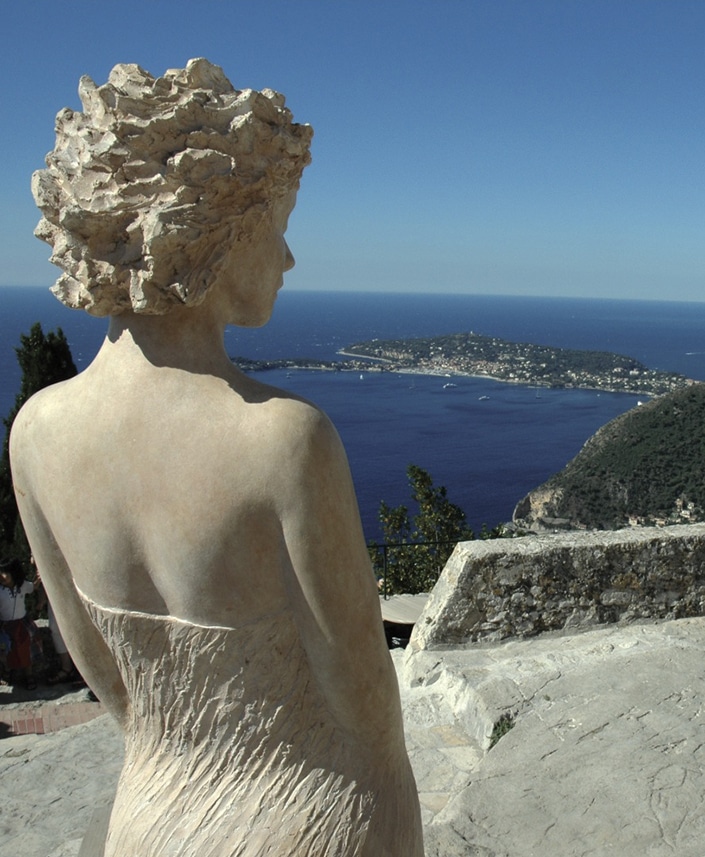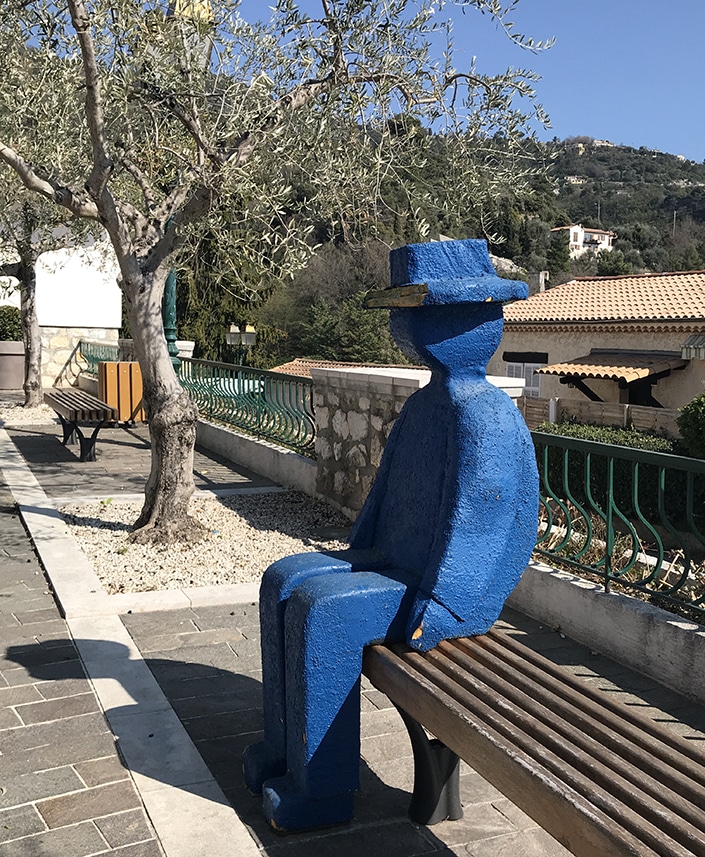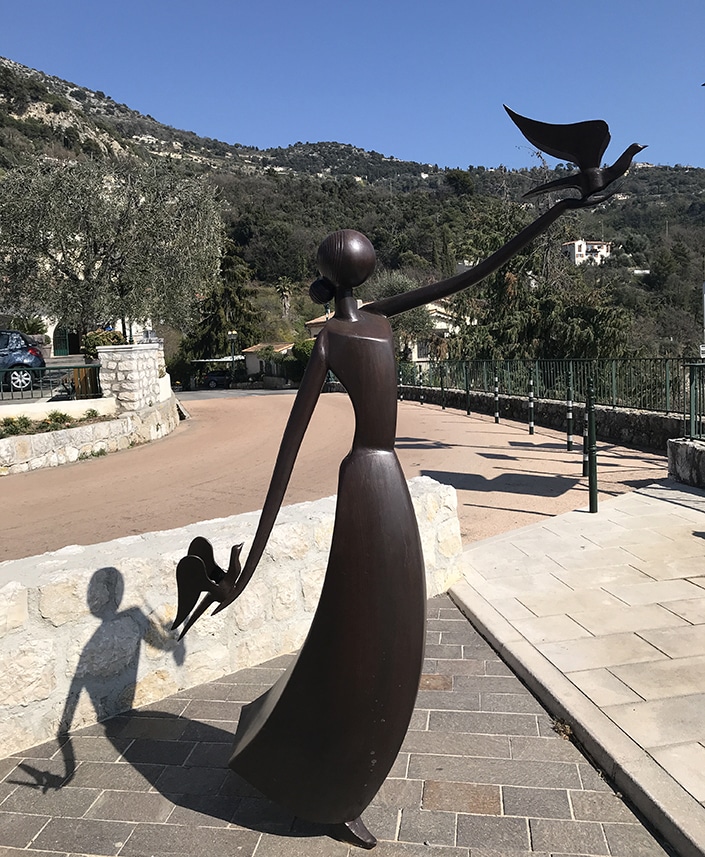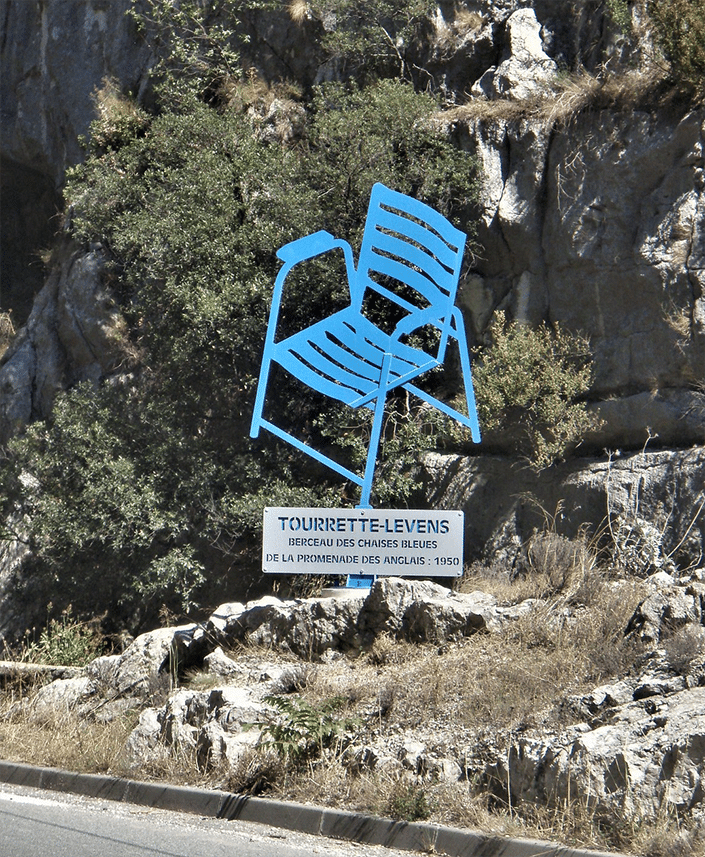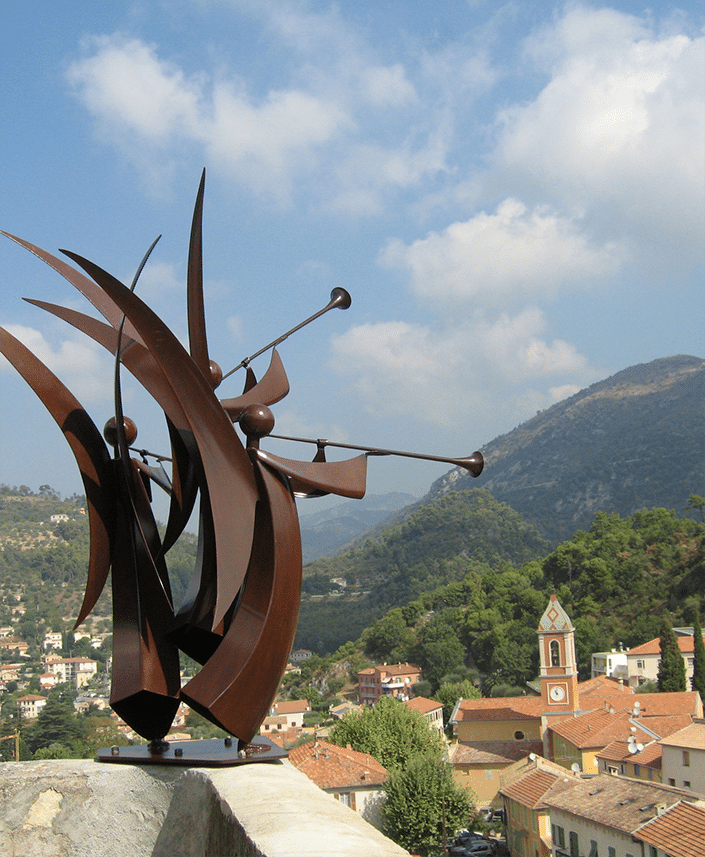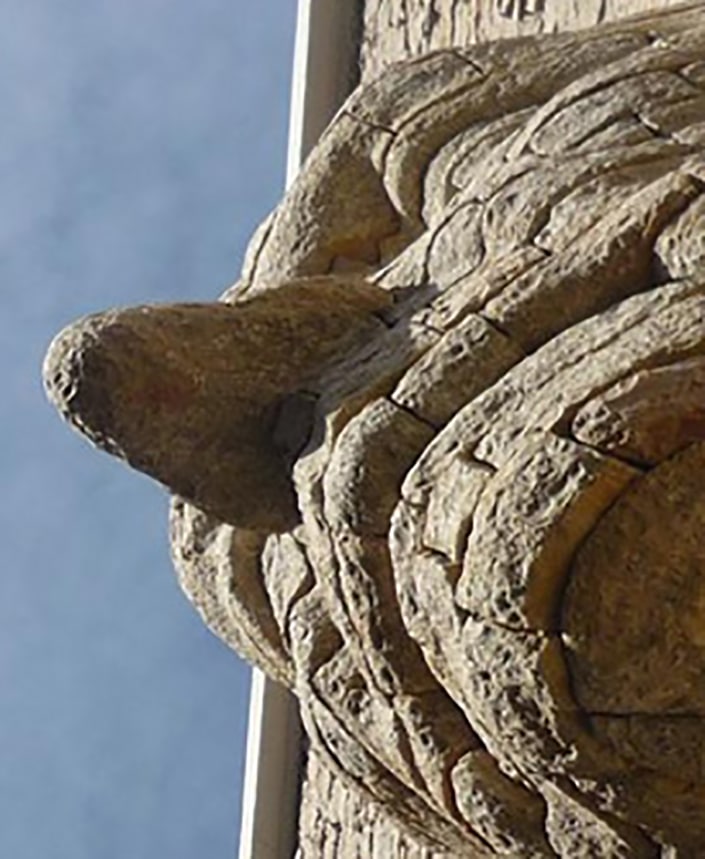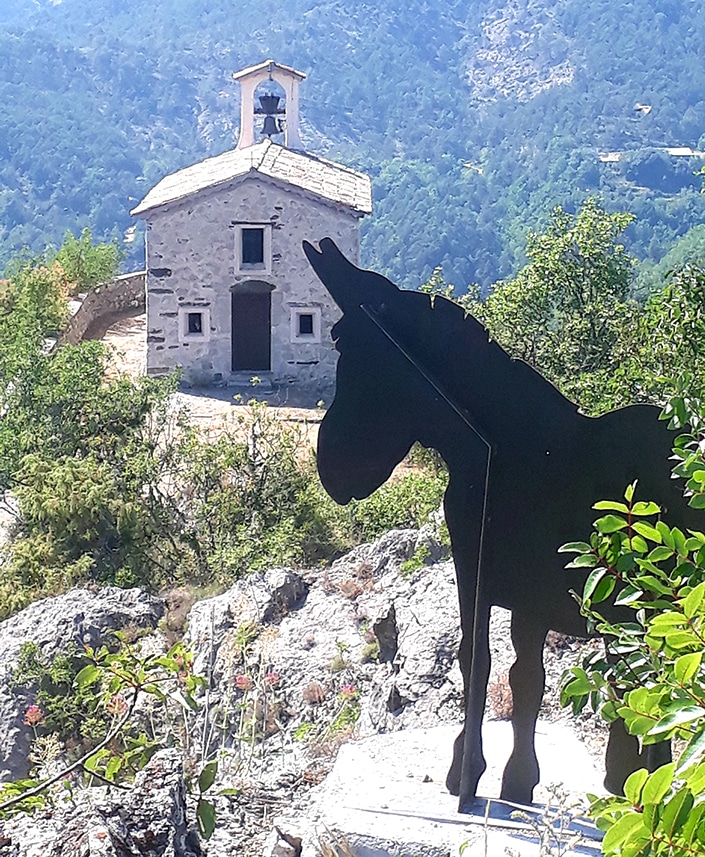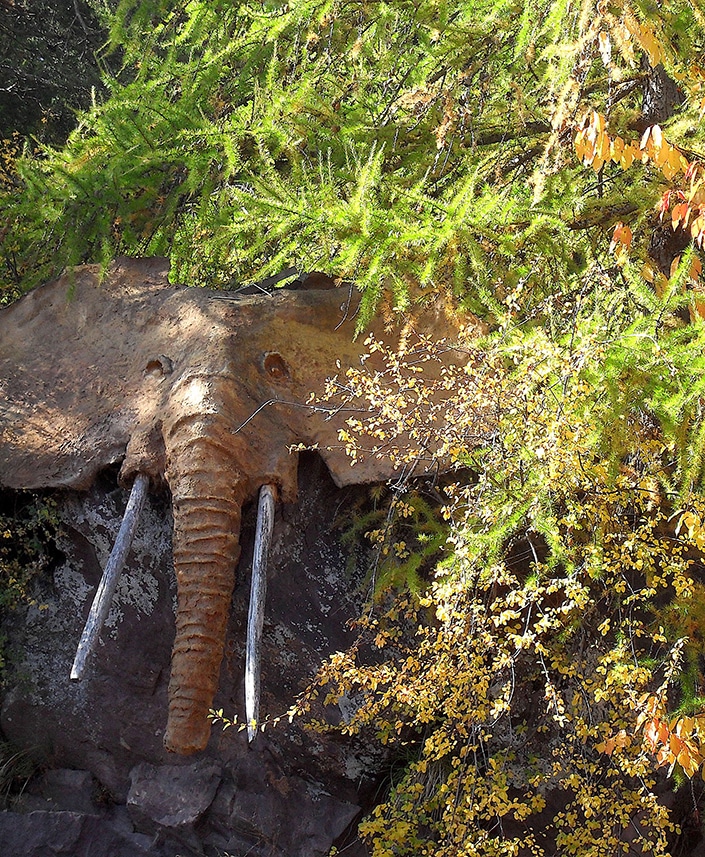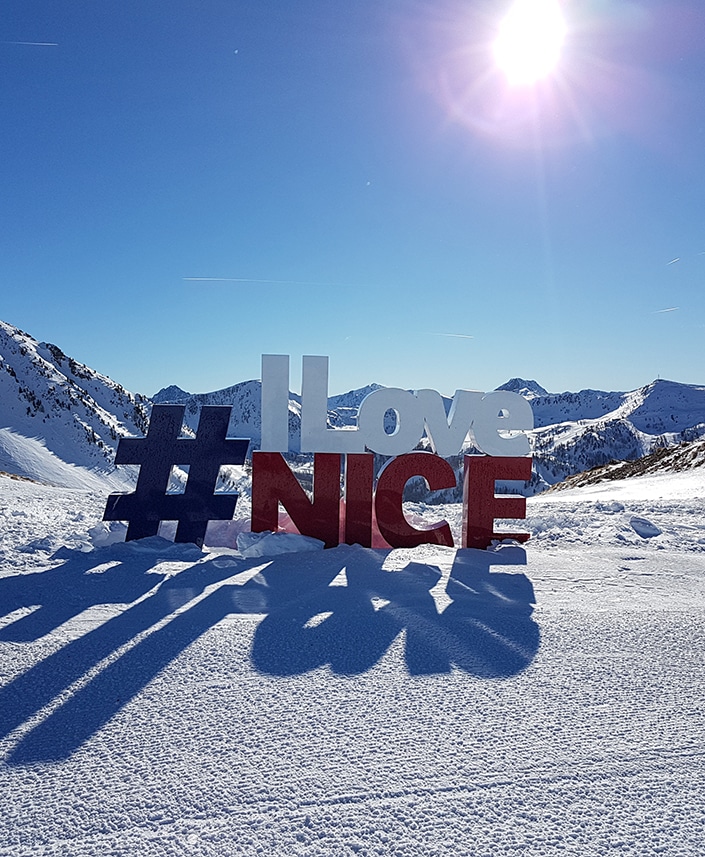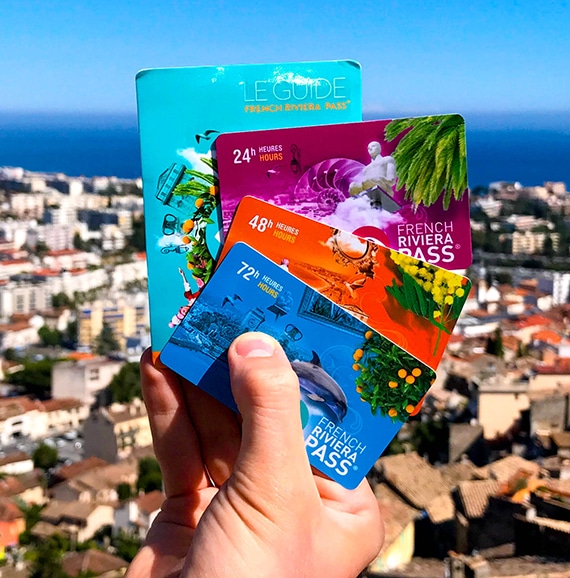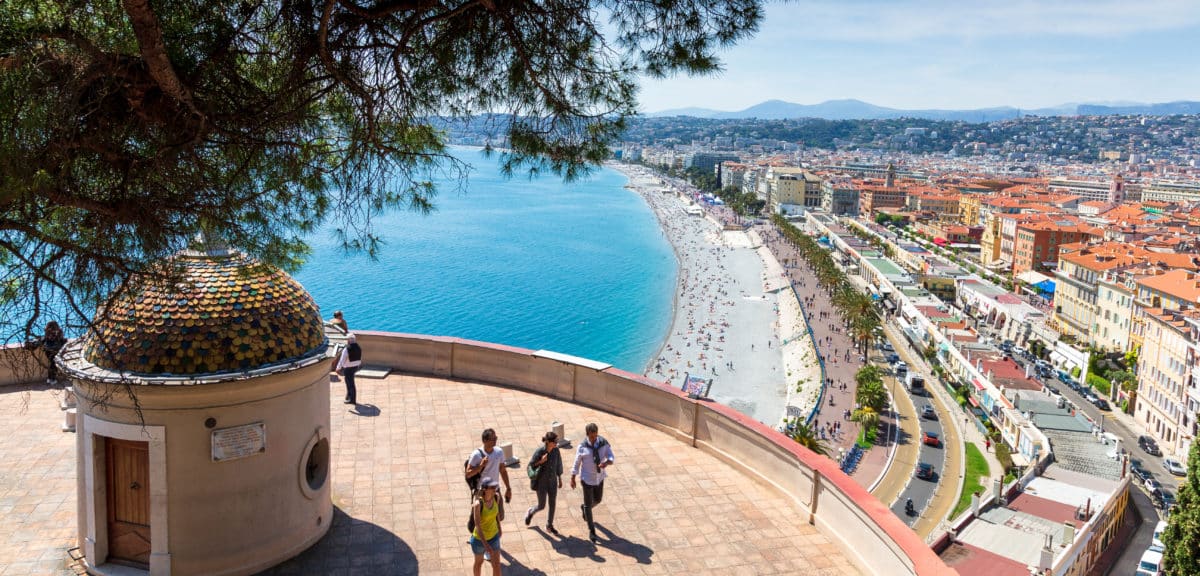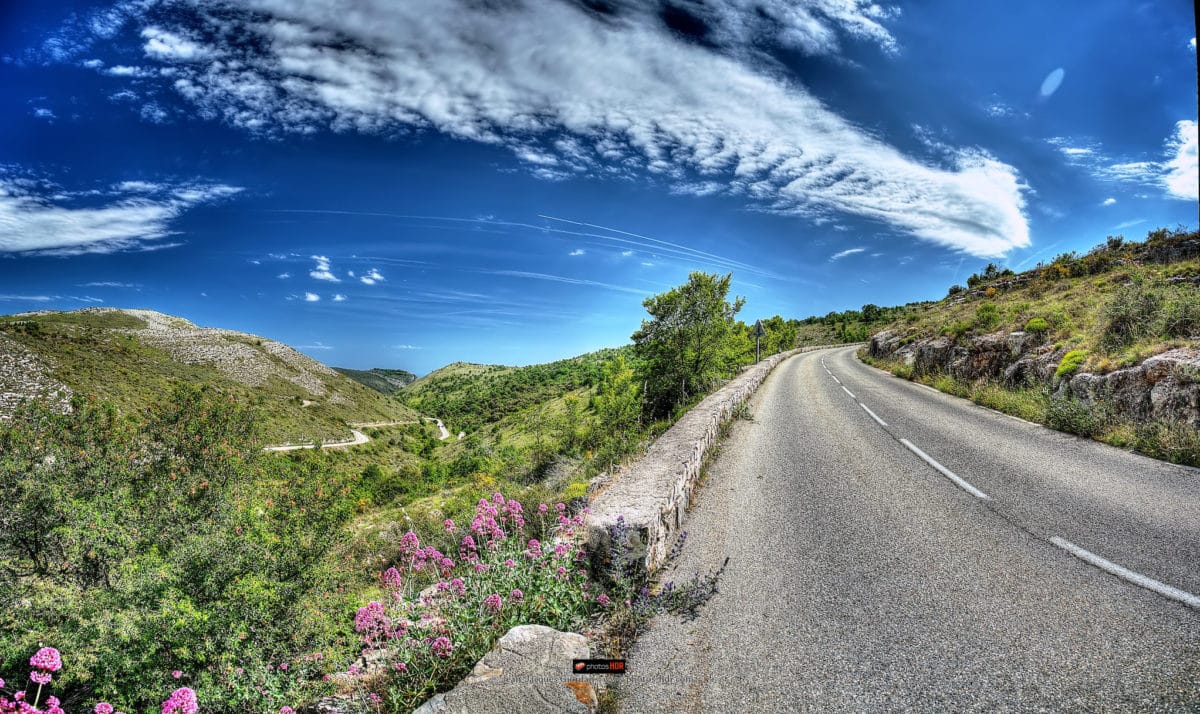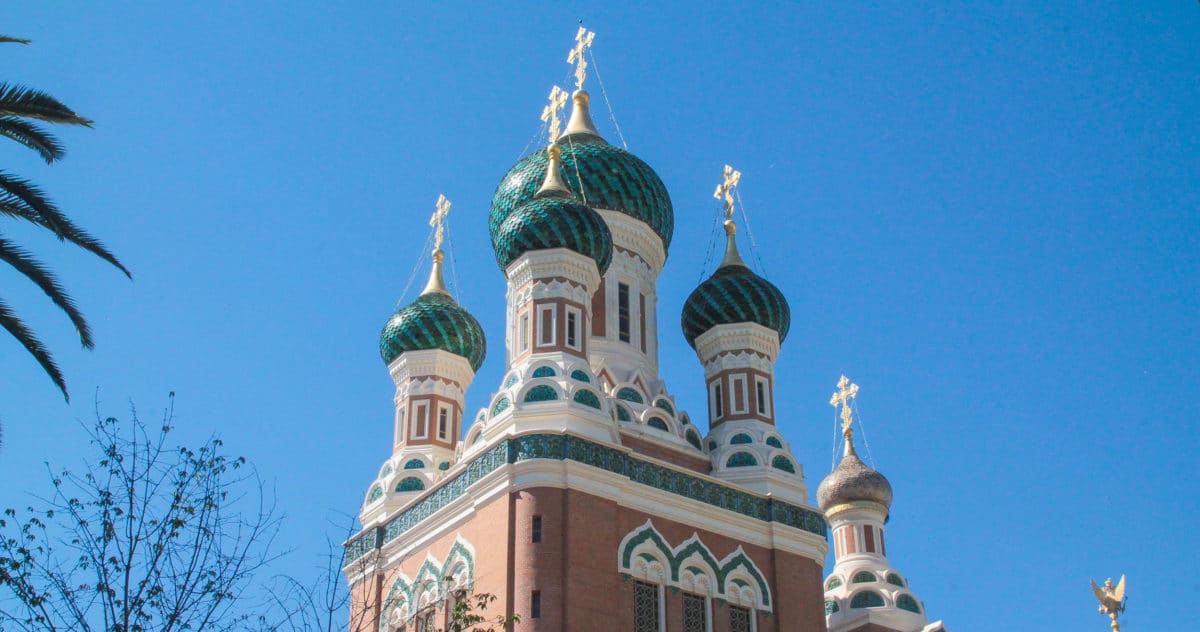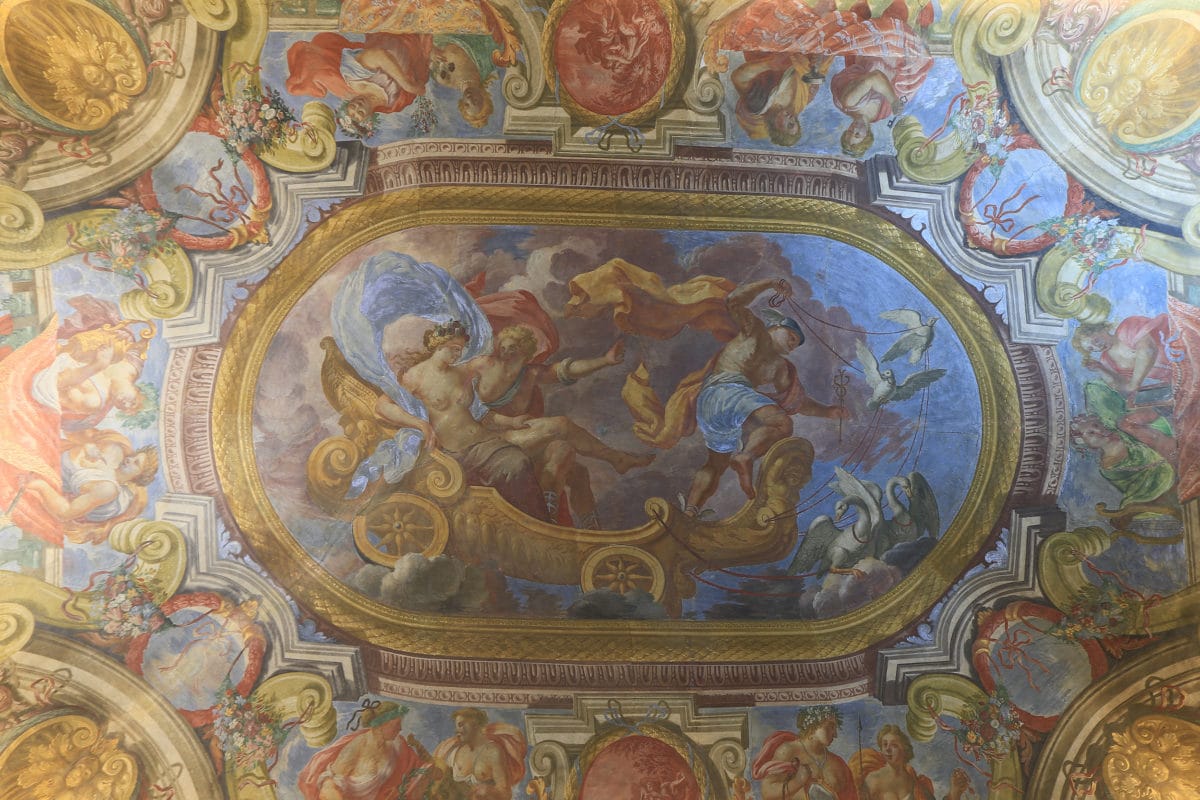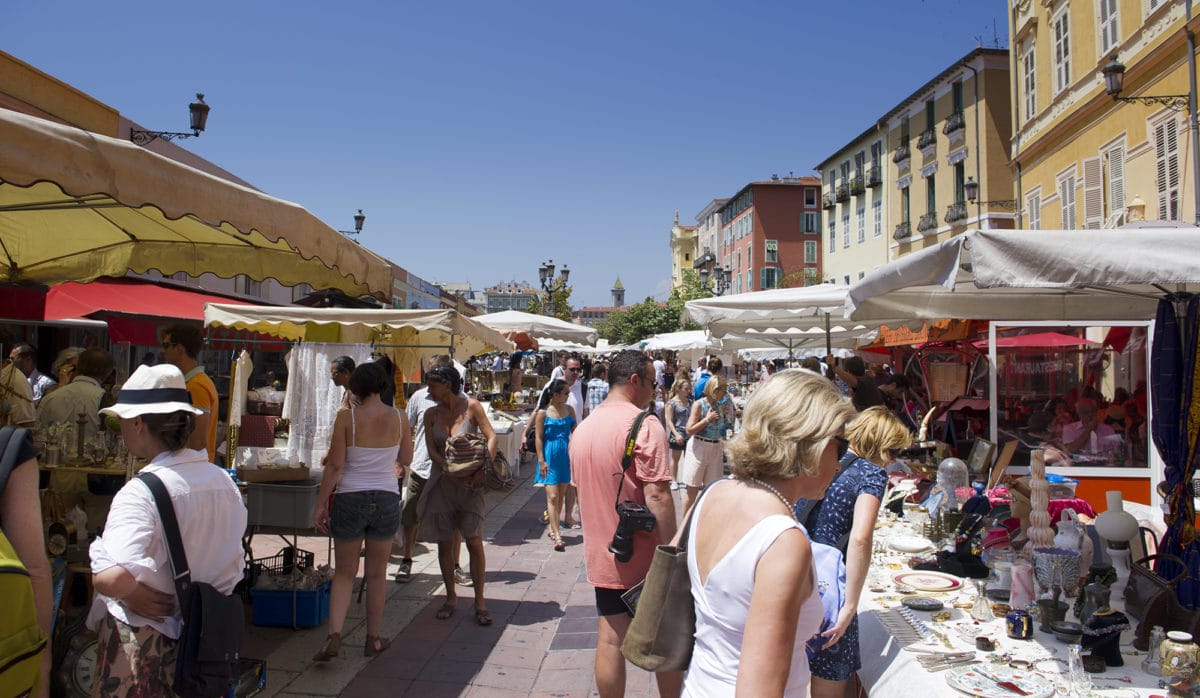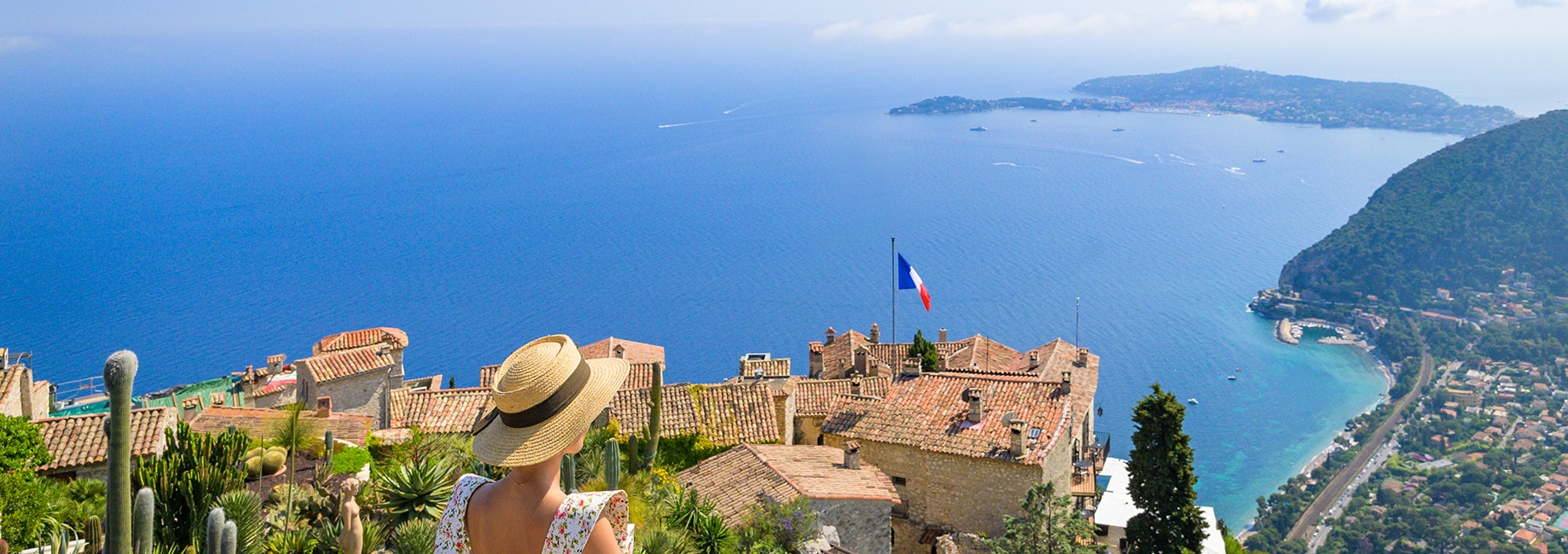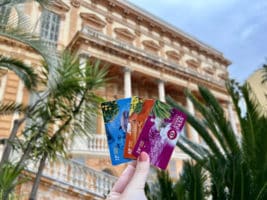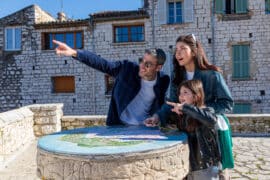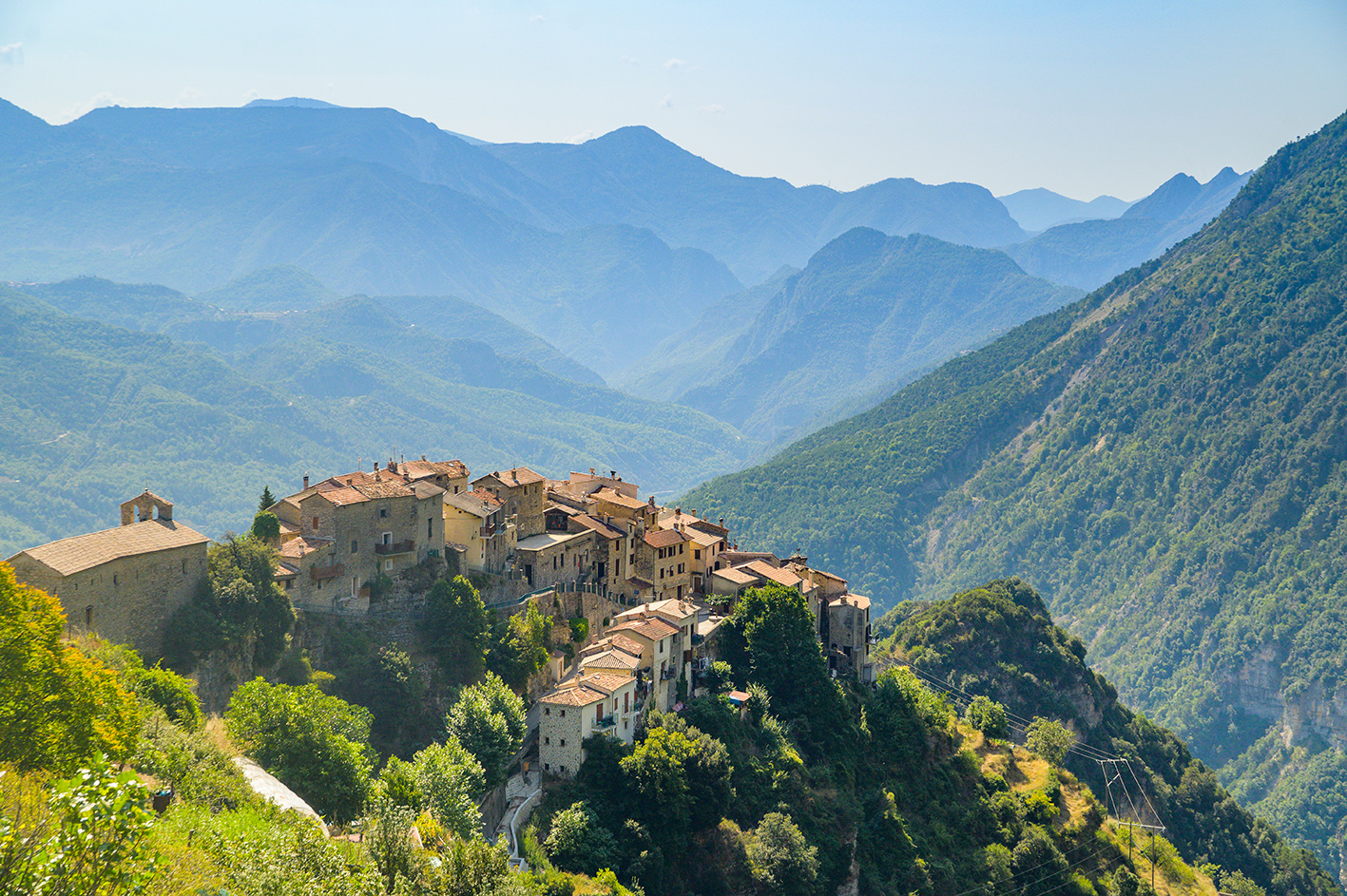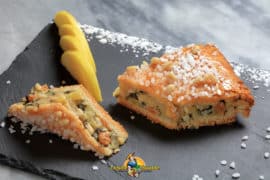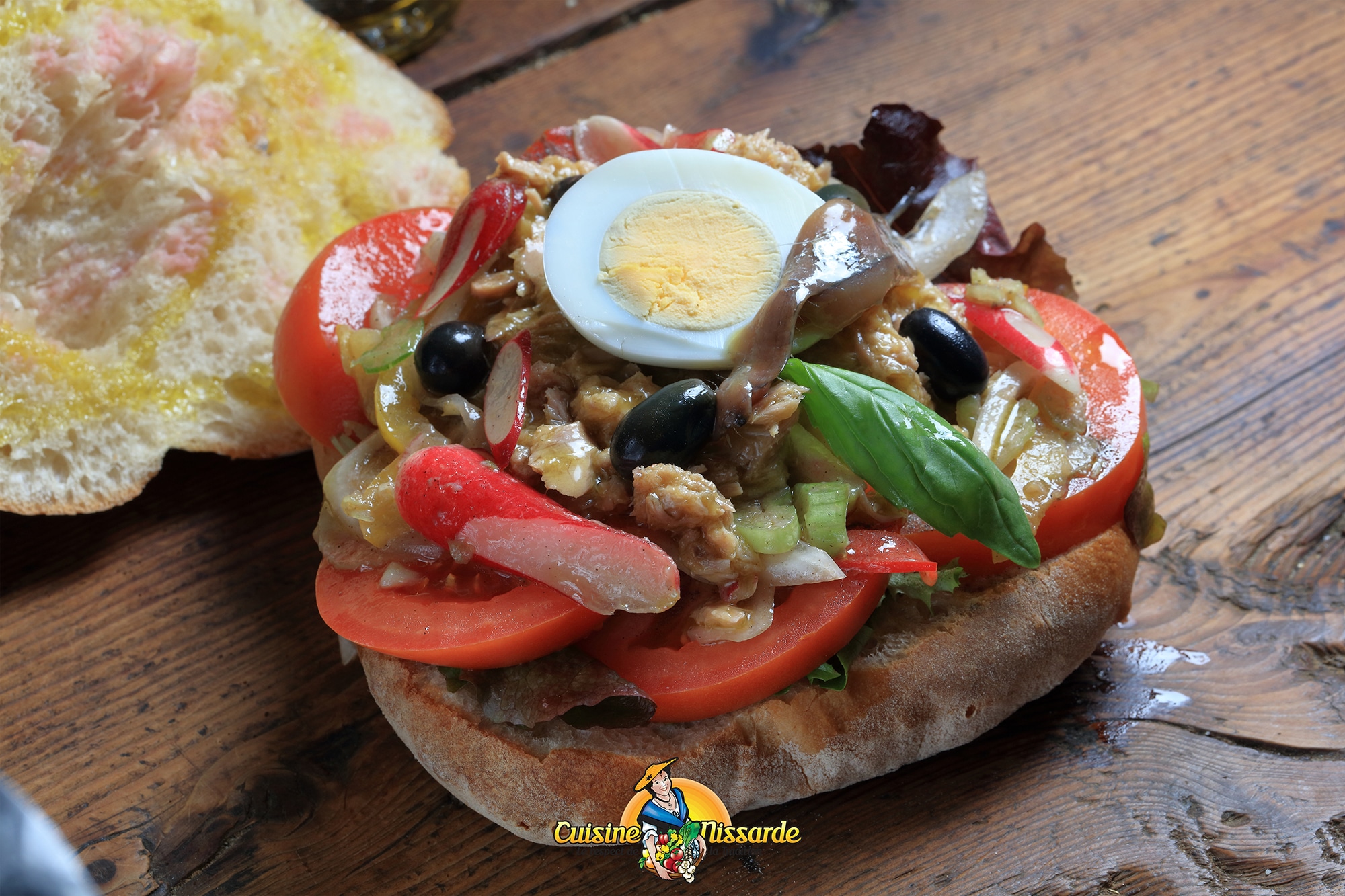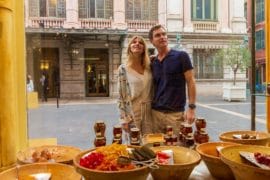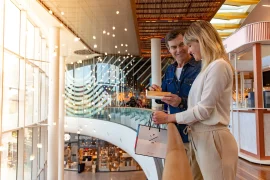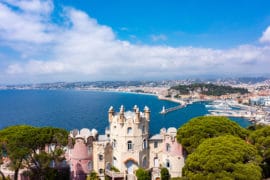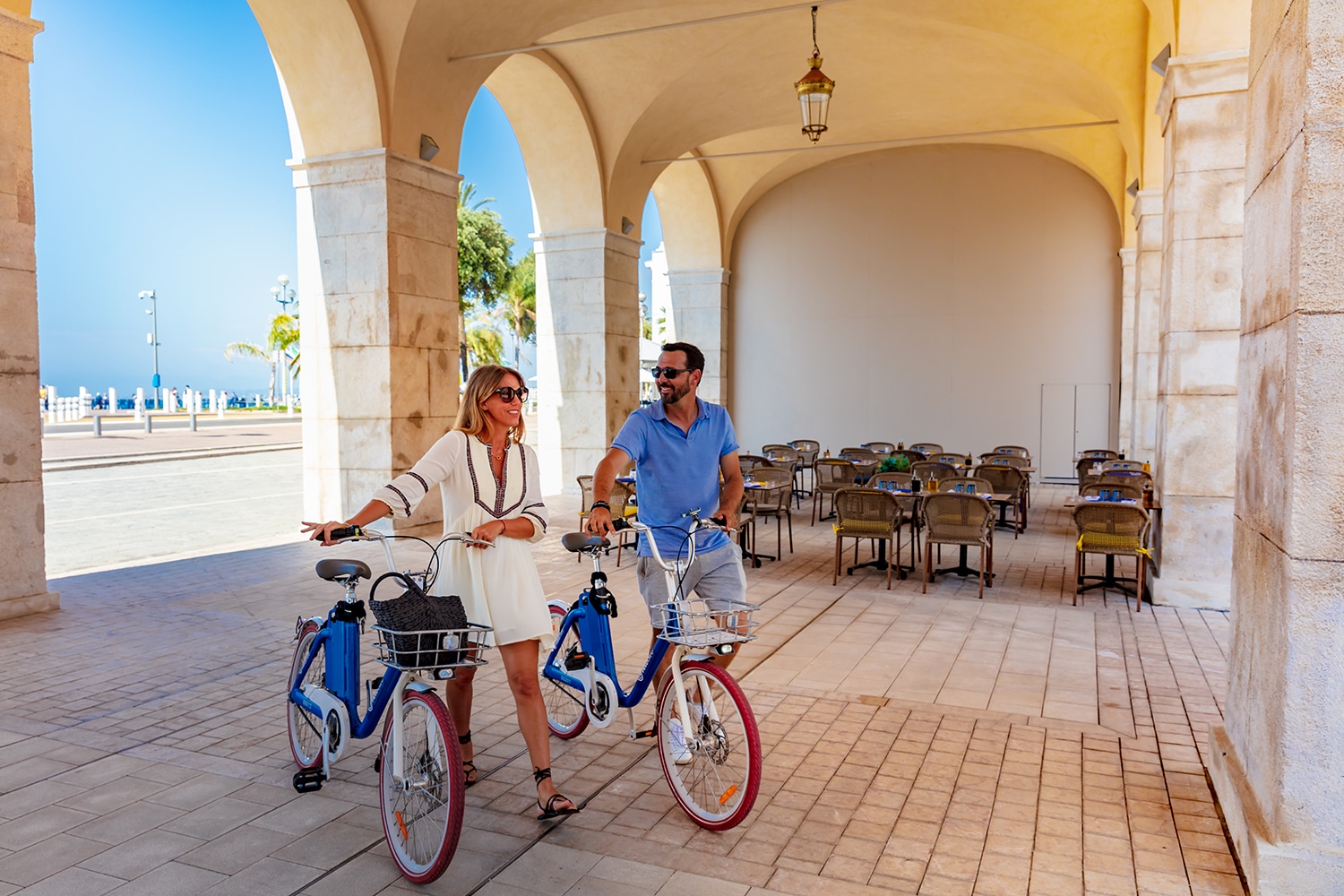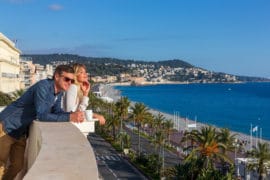Open-air contemporary art
7 April 2023
Nice Côte d’Azur, land of inspiration
We are sure you’ve heard of Nice Côte d’Azur. But did you know that it is a rich land in many ways?
With its typical landscapes, its special light, its exceptional colours, its history and its prestigious hosts, it has often been imitated but never equalled.
It holds an important place in the hearts of its inhabitants and has conquered the hearts of its visitors as well. It owes its fame to its legendary beauty but also to those who have known how to magnify it…
Many artists, native of the region or by adoption, have appropriated this bewitching, exuberant and so inspiring space like Matisse who said :
Matisse, Renoir, Picasso, Chagall, Cocteau, Deconchy, Soutine, Dubuffet… the evocation of these artists has become inseparable from our region, a true source of inspiration. The beauty of its coastline, its cliffs, its hinterland, is sublimated in countless works created and exhibited today in internationally renowned museums.
During your walks, you will notice lecterns representing the landscapes painted by these great masters. Take a break, admire and/or put yourself in the shoes of the artist who set up his easel on this site! Rather inspiring, don’t you think?
1. Works alongside the tramway
Artists began to move out of museums (outside the walls), to meet the public and integrate their work into the public space. Our territory became a vast open-air museum offering a permanent exhibition to walkers and passers-by. Open your eyes wide, raise your head sometimes, and listen… art is present in all its forms!
When you take the tramway in Nice, you can discover works – a dozen – that mark out the route from east to west and north to south. The “aphorisms” of the artist Ben, written in his own hand and found in the passenger shelters of each station, provoke reflection, astonishment, smiles, gravity or questioning.
At nightfall, some of these monumental works of art light up and make us enjoy a unique show.
You will be surprised by the special, almost hypnotic blue that shines under the railway bridge along line 1 (“Blue: Tribute to the blue of Yves Klein” by Gunda Förster).
Yann Kersalé’s “L’Amorse du bleu” makes the sky shine from part of the Avenue Jean Médecin, while on the Place Massena, your eye will be drawn to the seven high-perched figures of the “Conversation in Nice” by the famous Catalan artist Jaume Plensa, changing colours in a random fashion and giving the impression of reciprocal exchanges.
If you are in the district of Saint Jean d’Angely, you will discover the “exuberant composition of hybrid streetlights” by Stéphane Magnin and Pascal Pinaud which features 14 sculptures recycling old elements of public lighting.
With the opening of line 2 in 2019, eleven new works of art have been installed alongside the tracks. You won’t remain indifferent to Joanna Vasconcelos’ huge “Fruitée” ice cream cone, Noël Dolla‘s intriguing “Lou Che” sculpture at Port-Lympia, or Sacha Sosno‘s “Homage to Venus” and “Poseidon”. Going throuh the brand new Garibaldi le Château tramway station, you will come across the spectacular sculpture by Ernest Pignon Ernest, a pioneer of urban art, “Pépin, la Déesse et la Mer”.
2. Creative trends
You may not know it, but the city of Nice was at the heart of the emergence of several creative veins (Fluxus, Support/Surface, New Realism…) in the sixties, which brought together internationally renowned artists such as Arman, Yves Klein, Martial Raysse, Ben (Vautier), Bernar Venet, Ernest Pignon Ernest and Sosno who were all part of the movement.
Art historians will call these currents, which represent a new way of looking at art, the “Ecole de Nice”. To give us an idea of its importance, the inaugural exhibition at the Centre Pompidou in 1977 was entitled “About Nice” and presented the work of 26 contemporary artists from Nice.
Further east, the Saint-Jean-Cap-Ferrat peninsula hosted an open-air exhibition in the summer of 2017 featuring fifteen monumental works by Sosno. Subsequently, the city acquired four of his works, namely “The Great Blue Venus“, “The Watcher“, “Conversation“, which you can discover during a walk in the village, and “Universal Obliterator” at the bend in the path at Pointe Saint-Hospice.
Sacha Sosno
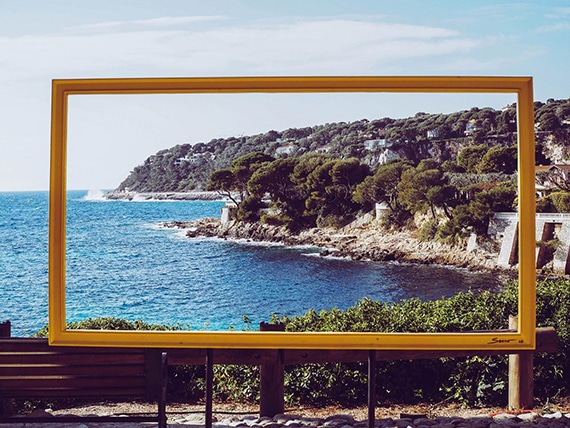
The artist Sacha Sosno (1937-2013), from the Ecole de Nice, left a strong imprint on the entire Nice Côte d’Azur Metropolitan area.
With his principle of obliteration (hide to see better), he invites you to imagine what lies behind his works.
Sosno is also one of the artists who thought that Art should come out of museums .
The artist’s works can be found all along the coast but also in the highlands.
Half a dozen of his sculptures are scattered all over the city of Nice. In the Acropolis district, you can’t miss the monumental “Tête Carrée“ which houses the administrative offices of the Louis Nucéra library; it is the key symbol of the city’s contemporary architecture. As the artist liked to say … statues need air!
On the west side of Nice, you will have to raise your head high to see the faces of Venus on the side facades of the AC Marriott Nice hotel, ex Elysée Palace (located at 59 Promenade des Anglais). From the top of their 26 meters, fashioned from 420 tons of granite, they will not fail to surprise passers-by.
In Cagnes-sur-Mer, the artist from Nice has imagined a beautiful project for the Polygone Riviera shopping centre. You are greeted by the sculpture “Le Guetteur”, the major work of art that looks at you, stares at you, observes you. In this “inhabited sculpture”, the Emperor Caesar’s gaze invites you to observe him: the viewer is therefore looked at…
The Hippodrome of Cagnes-Sur-Mer, a place that Sosno particularly cherished, is home to his work created in 2007, entitled “Il n’y a plus d’obstacle” (There are no more obstacles), which depicts a 3.25-metre-high horse in obliterated bronze.
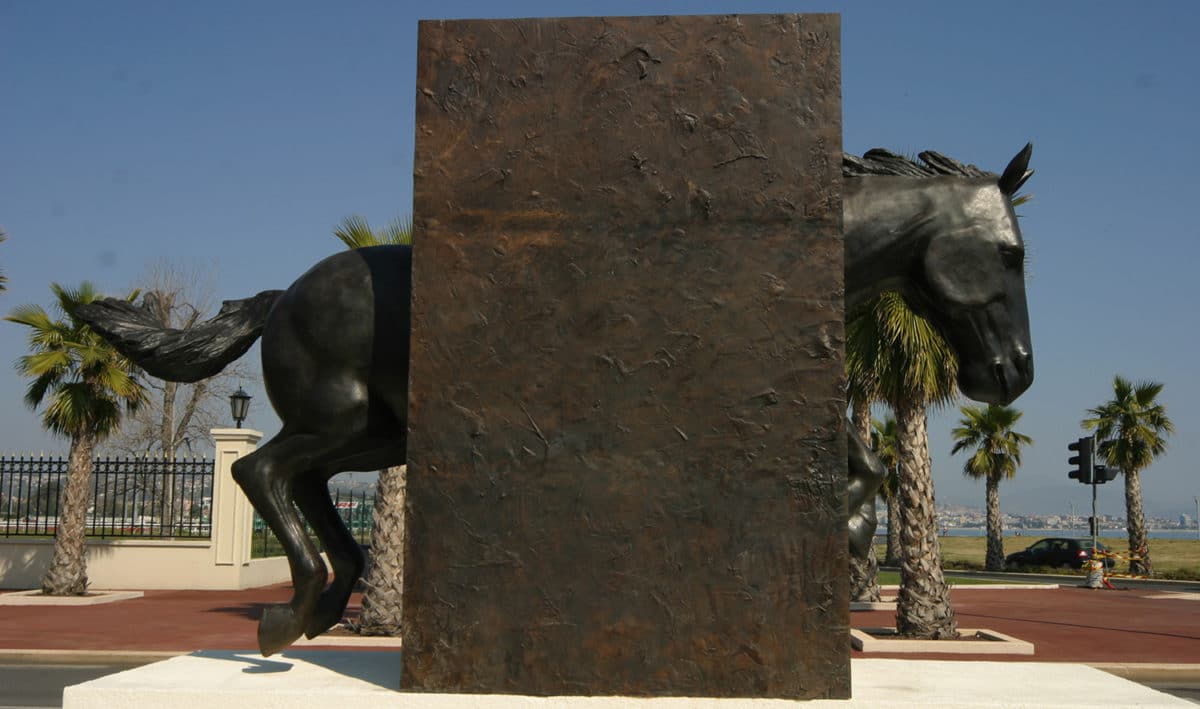
We find his trace in the Arboretum of Roure, a magical place where art and nature come together.
Did his artistic universe seduce you? To learn more about this emblematic artist, discover the book “Sosno le Secret” by Martine Arrigo-Schwatrz, which has just been published by Baie des Anges.
4. Eze and Castagniers
Continuing your route on the Moyenne Corniche, make a stop in the perched village of Eze. You will fall under the charm of its exceptional exotic garden which, thanks to its dominant position, offers a breathtaking view of the deep blue sea.
During your stroll in this haven of peace and quiet, let yourself be seduced by the artistic journey, rich in fourteen statues created by the sculptor Jean-Philippe Richard, which punctuate this garden with a note of poetry.
Art also invites itself in the villages of the Middle and High Metropolitan Country. If you leave the coast, you will find a few kilometres away as the crow flies Castagniers. Surrounded by hills and set in the middle of generous Mediterranean vegetation, the village offers an unobstructed view of the Var plain.
On the main square, several works of art transport you into a dreamlike and colourful universe. The elegant statue made by the sculptor Jean-Pierre Augier, an essential figure in the local artistic landscape, welcomes you at the entrance of the village.
5. Tourette-Levens and Levens
Nearby, the village of Tourette-Levens, a concentration of beauties and curiosities, is the birthplace of the famous blue chair of the Promenade des Anglais.
This chair was in fact created in 1950 in the workshop of Charles Tordo, who can still be visited today. Don’t leave the village without satisfying your curiosity!
It is difficult to talk about art in Tourette-Levens without mentioning once again Jean-Pierre Augier, whose many statues decorate the village.
Levens, the fiefdom of the sculptor offers an artistic tour of his works through the village. The artist finds his inspiration in old tools and iron objects that he transforms, by assembling them, into characters or moving animals. His favourite themes are women, motherhood, couples, men, animals, fables and tales, mythology and religious subjects.
In Levens one is an artist from father to son! Under no circumstances can you take your eyes off the monumental work “The Old Wall” visible from the municipal car park and created by Emmanuel Augier.
6. Tournefort, Ilonse, Roure and Isola 2000
Going further north, other villages are worth a detour. From Tournefort, you can discover the old village destroyed in an earthquake.
The experience is quite unprecedented! Bring walking boots before taking the carved walkways along the ascent, which will take you to the abandoned houses and the ruins of the castle where only the church and chapel survive.
Not far away, in the small medieval village of Ilonse, perched on a vertiginous rocky peak, you will again discover the works of the sculptor Jean-Pierre Augier. These can be discovered at the bend of an alley.
There is a rather unique place in the Nice Côte d’Azur high country where nature and art are one: the Marcel Kroënlein arboretum. Located in the commune of Roure, this specialized botanical garden is the only arboretum in Europe at altitude to be linked to art.
Since 2003, the “no made” collective has integrated the arboretum of Roure through a unique exhibition, renewed every year. The spirit of the arboretum is in harmony with nature, and their works are also in harmony with nature because it is nature that re-sculpt them with the elements (wind, rain, sun…).
As you will have understood, the Nice Côte d’Azur area is a vast playground for both artists and spectators. You won’t be surprised to see monumental works of art enthroned at the top of the ski slopes in the resorts of Auron and Isola 2000 … but we leave it up to you to discover them for yourself!



